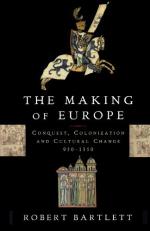|
This section contains 1,047 words (approx. 4 pages at 300 words per page) |

|
The Rise of the Bourgeoisie. Divisions among the social classes became exacerbated during the industrial era, during which the prototypical modern family emerged among the middle and professional classes. The bourgeois family is defined primarily by its ability to generate income and by its strict division of gender roles. The ideal middle-class family had a single wageearning male at its head, a mother who could afford to remain at home to manage the household and raise the children, and at least one servant, who cleaned the home and served the needs of the mother and family. In this model, the place of production was separated from the home. The family, and especially the children, were cushioned from public life and protected by the parents. Nineteenth-century artwork frequently depicts these family relationships, particularly the relationship between mother and...
|
This section contains 1,047 words (approx. 4 pages at 300 words per page) |

|




